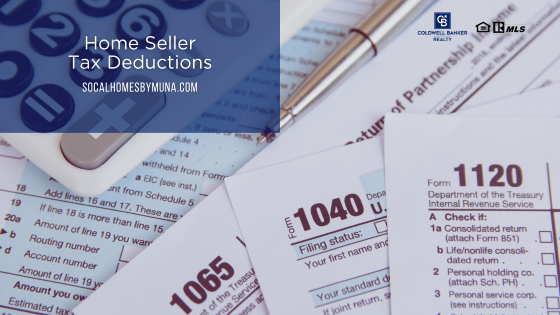Moving Tips for a Smooth Transition

According to Forbes, approximately 27 million people moved from one place to another in 2021 (the latest year they found statistics). That means roughly 73,973 people per day…or 51 people every minute. That’s a lot of moving. In the rush of moving into a new Inland Empire home, you might miss something. So, in addition to performing some of these priority tasks before you move into your new home, I created this list of helpful moving tips to help make your transition a little smoother.
Moving Tips for a Smooth Transition
Contact Internet and/or Cable Companies ASAP
With how much our lives depend on accessing “the web”, you really need to contact your local internet company as soon as possible. Their wait times can be extra long compared to other services, such as utilities, for example. And if you happen to work from home, you don’t want to be left in a bind after you move. Also, you may find the same situation with your local cable company. Therefore, it’s a good idea to contact these companies as soon as you have a move-in date so you can set up an appointment.
Make an “Open Now” Box
You started packing weeks ago. Good for you. But in an effort to get everything done, you might find yourself throwing things into boxes to just get it done. But then you end up scrambling to find the simple everyday things you need on moving day. For this reason, pack up an “open now” box. In it, include paper plates, napkins, paper towels, disposable utensils, plastic cups, toilet paper, extra chargers, a first aid kit, extra medication, pet food and medicine (if needed), water dish(es), a couple of changes of clothing per family member, bath towels, shampoo, soap, toiletries, blanket, and pillows. You also might want to include a few books, toys, coloring books, and card or board games to keep the kids (and yourself) entertained on that first night in your new home.
Vet the Movers
Moving companies help make the transition into a new home very easy. But it does come at a cost. Unfortunately, bad moving companies exist right along with good ones. Hence the need to vet the movers. What does that mean? Contact several different companies for quotes. Ask for references. Make sure they are insured. See if they show up on the Better Business Bureau or MovingScam.com. Another great resource to check their legitimacy is the American Moving & Storage Association’s website.
I hope these moving tips help make the transition to your new home a little easier. Good luck!
Muna Dionne, your Inland Empire specialist with Coldwell Banker Realty
Can You Trust Those Online Value Estimators?

You want to sell your Southern California home. First, you make any necessary repairs and clear up the clutter. Then, you hire a great REALTOR®. (Hint: contact me.) One of the things your REALTOR® will discuss with you is pricing. You may be tempted to look at those online value estimators to help determine your list price. But wait. How much can you really trust the accuracy of them?
Can You Trust Those Online Value Estimators?
If you type “what is my home worth” into Google, you’ll come up with literally millions of results. Some of the most popular include Zillow, Trulia, Redfin, and Realtor.com. You’ll also come up with several different “values” for your home. These can vary by thousands of dollars. Why? First of all, it might help you to understand how these estimators work.
How Do Value Estimators Work?
Like just about everything else online, they work off an algorithm. Much like credit reporting agencies, the info they gather may vary depending on what algorithm they use. Typically, they pull data from a variety of sources (public records, online listings, user info, etc.). However, they tend to start with the premise that all properties are in the same condition. They do not factor in updated features, improvements, or even if the property is rundown. That’s where you need a pro.
More Accurate Comps
Online value estimators may provide a point from which to start determining your list price. But don’t let it be the end-all-be-all of pricing. Instead, talk to your REALTOR®. They know the area and understand current pricing trends. Also, you might want to consider obtaining an appraisal before you list. A buyer gets one as part of the loan process. But this also provides the seller with the most accurate up-to-date value of their property from the moment they list it. So, the $300 to $400 you spend on an appraisal can easily be recouped when you sell your property.
Muna Dionne, your Inland Empire specialist with Coldwell Banker Realty
Clutter-Free Kid Spaces That Help Sell Homes

Preparing your Southern California home to sell is only the first step. You must keep it “show ready” at all times while looking for a buyer. Your own bedroom may be relatively easy to keep clean. However, keeping up clutter-free kid spaces may pose a bigger problem. Here are a few tips to help you create and, even more importantly, maintain a home free of children’s clutter.
Clutter-Free Kid Spaces That Help Sell Homes
Minimize the “Stuff” to Maximize the Impression on Buyers
First of all, you need to go through all of the clutter in your house, not just the kids’ stuff. Throw out any broken items. Then, see what you or your children have outgrown (either size-wise or age-wise). These items may be donated. Include your children in the process. Explain to your kids that it might be time for that unused toy to bring joy to another child. This may help make paring down a little easier on them. Finally, store away out-of-season clothing, seldom-used toys, most of the books, and any other items that your kids rarely use right now.
Transforming Furniture
Toy boxes only hold so much. Here is where furniture that performs double duty comes in handy. Ottomans or benches with hidden storage compartments help you stash away smaller items in a hurry anywhere in your home. Add some pretty baskets with lids around your home (on a console, on a shelf, on the floor next to the couch) to hide extra toys and blankets.
Underbed or Overhead
Want to put that extra clutter out of sight? Store it in containers under the bed or stacked neatly in storage bins in the closet and/or garage. You may also stash extra clothing, linens, and other items in these bins. Just make sure they look neat and tidy to the eye when stored away.
Muna Dionne, your Inland Empire specialist with Coldwell Banker Realty
Home Seller Tax Deductions

In case you didn’t know, tomorrow (April 18th) is the official deadline to file your taxes. Since the regular tax filing deadline (April 15th) fell on a Saturday this year and the next business day happens to be Emancipation Day in Washington DC, the IRS moved the deadline to the 18th. If you waited until the very last minute to file, you might be in luck. If you sold a Southern California home in 2022, we compiled a few home seller tax deductions to be aware of to help you maximize your return this year.
Home Seller Tax Deductions
Your Selling Expenses
It costs money to make money. That rings true with selling a Southern California home, too. Some costs shouldered by the seller include advertising fees, title fees, escrow fees, commissions, staging costs, and sale prep costs. Fortunately, you may be able to deduct some of these expenses on your income taxes. However, the home in question must have been your primary residence for at least two of the last five years in order to qualify. So, if you sold an investment property, this tax deduction does not apply.
Cost of Improvements/Repairs
Did you need to paint or update the flooring in order to appeal to today’s buyers? Were repairs necessary to make your property saleable? You may be able to write these off on your taxes as well. But they need to have been completed within 90 days of your closing date in order to be considered for a deduction. It pays to keep your receipts just in case.
Partially Paid Property Taxes & Mortgage Loan Interest
The IRS allows home sellers to write off any property taxes you paid on your Southern California home up until the closing date (up to $10,000). The same is true for any interest paid on your mortgage loan during that time as well. However, some caveats apply.
Capital Gains Exemption
While not a “deduction” per se, the capital gains exemption saves you thousands of dollars. When you sell your home for a profit, Uncle Sam considers that profit as “income”. Therefore, it is taxable. Fortunately, though, some if not all of that profit may actually be exempt from taxes. The first $250,000 of profit for single sellers and $500,000 of profit for married couples are considered exempt from taxes as of the date of this writing. So, if your and your spouse paid $300,000 for your Southern California home several years ago and sold it last year for $750,000, that $450,000 in profit goes to you free from taxes. If you are a single seller or married filing separately, you pay taxes on $200,000 of profit…not the full $450,000. Again, though, this must be your primary residence in which you lived for at least two of the last five years to qualify for the exemption. Also, this is where your home-selling expenses can reduce your capital gains and, in turn, your taxes due on them.
As always, talk these home seller tax deductions over with your tax preparer. Make sure to tell them about all of your expenses. Ask any questions that pop up in your mind, too. Good luck!
Muna Dionne, your Inland Empire specialist with Coldwell Banker Realty


 Facebook
Facebook
 X
X
 Pinterest
Pinterest
 Copy Link
Copy Link





